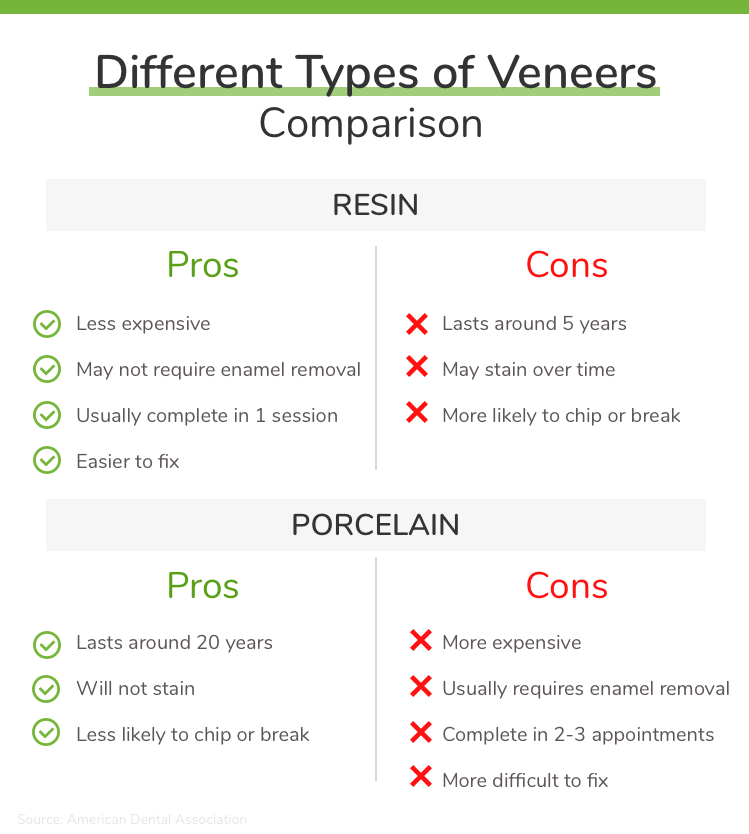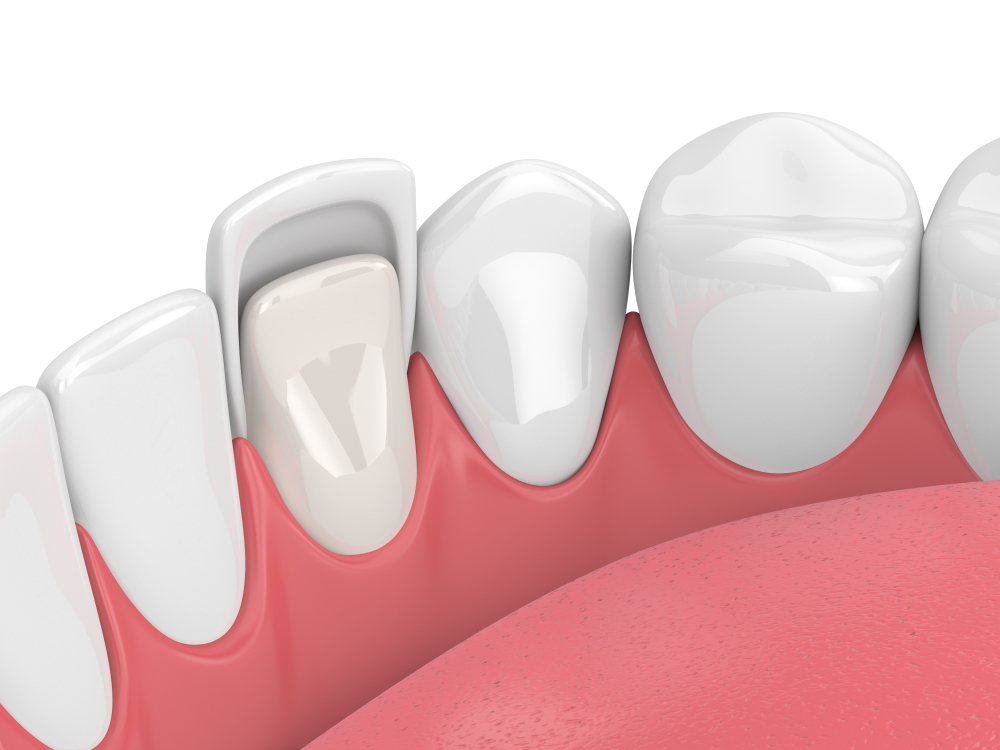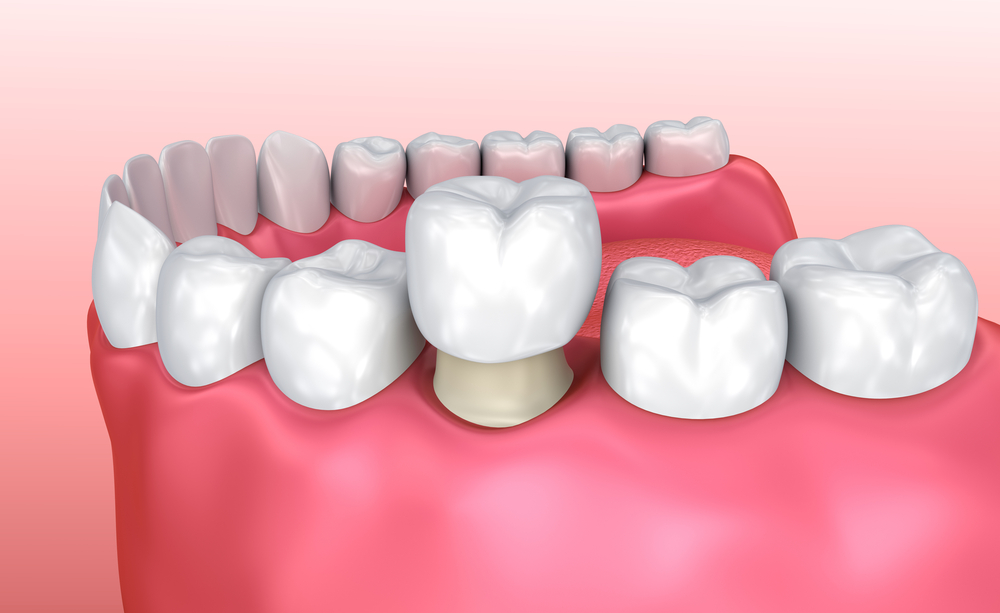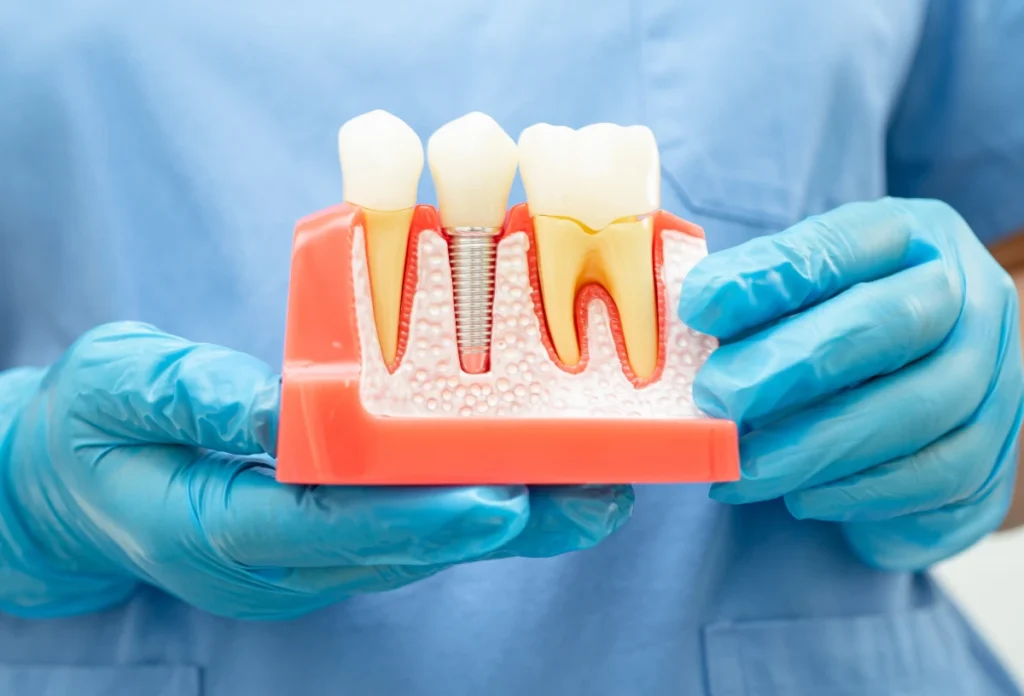Quick Answer: How Much Are Veneers?
Dental veneers cost anywhere from $250 to $2,500 per tooth. The cost depends on several factors including size and number of veneers requires and the type of veneer material. A composite resin veneer is generally less expensive, around $250 to $1500 per tooth while a porcelain veneer can range from $925 to $2,500 per tooth. Continue reading for more information about the average cost of veneers.
More than one-third of Americans say they’re unhappy with their smile, and veneers can provide a life-changing solution that helps people smile more confidently. If you’re contemplating the procedure and wondering, “How much do veneers cost?” the short answer, unfortunately, is… not cheap.
Without cosmetic dentistry insurance, patients could pay thousands of dollars in out-of-pocket costs—but it doesn’t have to be this way. We’ll break down the price of veneers and explain the variables that could make the procedure more or less expensive, including information on how you can save money with a discounted veneer price.
Keep reading to learn how much veneers cost and how you can cut down the expense, or click on a link below to access the specific information you need.
- How Much Do Veneers Cost?
- How Is the Cost of Veneers Calculated?
- What Are the Different Types of Veneers?
- What Is the Procedure to Get Veneers?
- What Types of Problems Do Veneers Fix?
- What Are the Alternatives to Veneers?
- Are Veneers Worth the Cost?
- Veneer FAQs
- Discounts on Veneer Prices
How Much Do Veneers Cost?
Dental veneers cost anywhere from $250 to $2,500 per tooth, according to the American Dental Association (ADA). The ADA labels the procedure “cosmetic” and, therefore, most insurance companies do not cover the cost of veneers; they are very rarely considered a necessary procedure for the health of a patient, and therefore do not fall under qualified needs-based claims.

The exact price you can expect to pay will depend on the number of veneers you need as well as the expertise of the dentist performing the procedure, among other factors we’ll discuss in greater detail below.
How Is the Cost of Veneers Calculated?
There are several factors that determine the total veneer price, including:
- The size and number of veneers required.
- The equipment and experience needed to apply the veneers to your teeth.
- The amount of tooth preparation and follow-up work.
- The location in which the dental office is located, as price may vary by state.
- The type of material the veneer is made with.
The material used is one of the largest variables, as whichever type you choose will have a significant impact on the overall cost of veneers.
What Are the Different Types of Veneers?
Essentially, a veneer is a thin shell bonded to the front of the tooth to improve its appearance, but there are two different types: those that are made with a resin-based compound, and those that are made with porcelain. Although the two materials may look very similar in the end result, there are several key differences you should be mindful of when comparing veneer costs.
A composite resin veneer is comprised of a tooth-colored filling material that’s bonded to the top and sides of the tooth. These veneers cost less (around $250 to $1500 per tooth) and require less enamel removal; in some cases, the dentist may not have to remove any enamel at all. They can be applied within just one appointment, sparing you from multiple visits to the dental office, and can be easily fixed if damaged.
However, the resin material is not as durable or resistant to wear as porcelain, and it may stain or discolor over time. According to the ADA, they generally last around five years before they require replacements.

A porcelain veneer is a thin, strong cap that’s custom-made to fit around a tooth in order to cover its discolored or misshapen appearance. They’re much more durable and less likely to chip or break, lasting as long as 20 years with good oral hygiene. Porcelain is also more resistant to staining than resin, with better light-reflecting properties that mimic the tooth’s natural look.
These dental veneers cost much more ($925 to $2,500 per tooth) and require the removal of tooth enamel before they can be applied, which is essential to their performance as evidenced in the clinical study published by PubMed.gov. Therefore, you’ll need at least two to three appointments to achieve a successful application. Additionally, the porcelain laminate is custom-fitted, making it harder to repair if chipped or broken.
Takeaway: Ultimately, you’ll need to talk to your dentist about how much veneers cost to determine which option best suits your budget, preferences, and needs. They are able to take preparation design into consideration as well as many other factors.
What Is the Procedure to Get Veneers?
The veneer procedure a patient undergoes depends on which material is being used, but both require the skill of a highly trained dental professional.
Resin dental veneers cost less because the procedure is much faster and easier. The dentist will start by cleaning, reshaping, and preparing the tooth (or teeth). Then, they’ll bond and sculpt the resin-based compound and adjust its color so that it blends with the rest of your smile.
Once applied, the dentist will use an ultraviolet light to dry and harden the composite material, then polish and smooth its surface so it looks and feels real.
The porcelain veneer price is significantly higher because the procedure is far more complex and requires multiple appointments. During your first exam, the dentist will examine your teeth and take x-ray images of your mouth. At this time or during your next appointment, they will then trim the tooth enamel and make a mold of your bite.

The mold is then sent to a laboratory where the custom fittings are made; temporary veneers may be applied as a short-term solution while you wait for the lab to fabricate the permanent ones, which typically takes a few weeks.
At the next visit, the dentist will then bond the veneers to your teeth and adjust the fitting so that it aligns perfectly. They may also trim the veneers if necessary, and alter the color to achieve the right aesthetic.
What Types of Problems Do Veneers Fix?
People routinely pay for veneers to fix teeth that are:
- Stained or discolored.
- Worn down, chipped, or broken.
- Misaligned, uneven, or irregularly shaped.
- Spread out by large gaps.
Veneers are one of the most popular dental procedures used to significantly improve the appearance of a smile by altering the color, size, and shape of teeth. However, because the procedure is considered cosmetic, and the cost of veneers may be hard to afford, you might consider alternative options that are less expensive or fall within possible insurance coverage.

What Are the Alternatives to Veneers?
If you’re concerned by the veneer’s price but interested in improving the appearance of your smile, there are other procedures within the school of prosthodontics you might consider. This is the branch of dentistry that specializes in designing and implementing artificial replacements for teeth as well as treatments for gums. Two common alternatives to veneers you might explore are dental crowns and dentures.
-
Veneers vs. Dental Crowns
A dental crown, also known as a cap, is similar to a veneer but covers the entire tooth, rather than just the front surface. They may offer a more affordable choice for restoring cracked, chipped, or otherwise worn-down teeth—especially if the procedure is deemed medically necessary and covered by your dental insurance.
A crown may be needed if the exposed part of the tooth is damaged—which could be due to grinding, aging, or an improper bite—but the roots are still structurally sound. Other situations include capping a damaged tooth that’s about to fall apart, or when a large portion of decayed matter had previously been drilled out and filled, leaving the remaining enamel too weak to support biting or chewing.
Whereas a filling can only cover a portion of the tooth, a crown can cover the whole thing. They’re available in many different materials, giving you the flexibility to choose the best option for your budget. For a crown made of porcelain fused to high metal, which is one of the most common kinds of crown, the average procedure costs $1,278,* which may be cheaper than the price for a veneer.

*The select regional average cost represents the average fees for the procedures listed above in Los Angeles, Orlando, Chicago and New York City, as displayed in the cost of care tool as of June 2020..
-
Veneers vs. Dentures
If you’re experiencing tooth loss, you might consider partial, full, or permanent dentures as an alternative solution. The ADA finds a complete set can range from $400 to $8,000, but with 32 teeth, that price breaks down to $250 per tooth at most, which is far more affordable than the cost of veneers.
Dentures also have a longer lifespan, easily lasting well over 20 years with proper care, helping you to get more of your money’s worth. Like veneers, they too have a natural appearance that resembles real teeth, but the procedure may be more invasive and time-extensive if tooth removal is required.
Takeaway: There are many different ways you can improve the appearance of your smile, from over-the-counter teeth whiteners to custom retainers that correct misalignment. Discuss your specific concerns with your dentist to learn more about the best options and their corresponding price points.
Are Veneers Worth the Cost?
Many people who are curious about how much veneers cost later conclude that the upfront price, although expensive, is well worth the personal investment. We’ll discuss the many benefits you stand to gain with the procedure, followed by several shortcomings to keep in mind.
Benefits of Veneers
Here are some of the top benefits that add value to the veneer price:
- Veneers boost confidence by cosmetically repairing the appearance of teeth.
- A veneer smile looks very realistic and feels natural in your mouth.
- The procedure is quick and non-invasive, with minimal pain and recovery.
- To apply a veneer, less enamel needs to be removed than a crown would require, helping to preserve the tooth’s strength and integrity.
- You can choose a color to make dark teeth appear whiter and stay whiter.
- Gums tolerate porcelain well, leading to less irritation and sensitivity.
- Veneers are durable, lasting between 5 and 20 years with proper maintenance.
- Because veneers are non-porous, they resist stains and cavities better than natural tooth enamel.
All things considered, many find that the cost of veneers is a worthwhile investment in long-term dental care. They can quickly improve the cosmetic appearance of your smile by whitening teeth and correcting their shape, while also being used as a tool to treat enamel loss and prevent cavities.
Shortcomings of Veneers
Although there are many benefits that come with the price of veneers, there are some risks you should be aware of, such as:
- If the procedure requires the removal of tooth enamel, you may become more sensitive to hot and cold foods and beverages.
- Veneers may not be the best choice for patients who do not have enough existing enamel on the tooth surface, or for those who haven weakened, unhealthy teeth.
- People who clench their jaw or grind their teeth at night may not be a good candidate for porcelain veneers because doing so may cause them to chip or crack.
How to Care for Veneers
If you decide to get to the procedure, it’s important to follow up with veneer dental care to extend their longevity and get the most value from your purchase. Veneers do not require special treatment but be sure to maintain good oral hygiene practices as you would normally, including:
- Brushing
- Flossing
- Rinsing with an antiseptic mouthwash
- Scheduling regular dental exams
Keep in mind that even though porcelain veneers are more stain-resistant, your dentist may nonetheless advise you to steer clear of foods and beverages that are known to cause stains such as coffee, tea, and red wine.
Veneer FAQs
Still wondering how much veneers cost and whether the expense is worth your while? We’ve compiled answers to common questions we receive about veneer pricing and what the procedure entails to help guide your decision.

-
Is it Painful to Get Veneers?
Typically, no; patients are numb throughout the procedure, and there should be no pain during the process. According to the American College of Prosthodontists (ACP), in smaller applications of two to four veneers, patients will experience little to no discomfort after the numbness subsides.
In procedures that involve the application of five veneers or more, patients can expect some soreness in the gums and/or jaw in the following day or two. This sensation can easily be remedied with over-the-counter medications.
-
Will Insurance Cover the Cost of Veneers?
It depends on your insurance company; in most cases, no. However, if veneers are deemed necessary for the patient’s health, some dental insurance providers will agree to cover a portion of a claim. As this procedure is considered cosmetic, most patients pay the veneer price out-of-pocket.
-
How Can I Afford Veneers?
There are two common ways to finance expensive dental work: through financing and dental savings plans.
Dental financing is available at many offices. They offer programs or work with a third-party provider that allows patients to pay off the price of veneers, and many other dental procedures, in monthly installments. These programs often require an application and approval is usually based on credit-worthiness.
Dental savings plans offer low, pre-contracted dentists rates, so patients only pay a portion of the total bill. Cosmetic procedures, including the price for veneers, may be discounted as much as 15-50% off the dentist’s standard price. Depending on the total number of veneers needed, this could amount to several hundred dollars in savings.
Discounts on Veneer Prices
If you’re researching “How much do veneers cost?” and are disappointed to learn that the price is rather high, it doesn’t mean the procedure is necessarily out-of-budget. With 1Dental, you can enjoy a cosmetic dentistry discount that lowers the rate at in-network offices to make the cost of veneers more affordable.
Our dental savings plans can also provide generous discounts on crowns, dentures, and many more procedures depending on the type of treatment you need—both now, and in the years to come. We offer several different packages to choose from, giving you the flexibility to choose the plan that best fits your budget and needs.
Planning ahead is a critical component of financial success, whether that may be for a cosmetic procedure or necessary repair. Dental work can cost thousands of dollars, especially if the problem is unexpected or left untreated, resulting in a large hit to your finances. So, be proactive and make your savings smile—while achieving a smile you’re proud to share—with affordable dental care, brought to you by 1Dental.
This content is not intended to be a substitute for professional dental advice, diagnosis, or treatment. Always seek the advice of your dentist with any questions you may have regarding your oral health.






